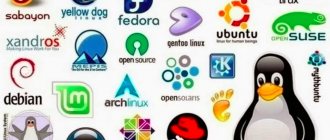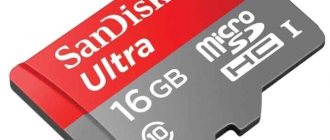3.4/5 — (17 votes)
If you look at all kinds of tops and ratings, you will notice that the share of Linux users is steadily growing. This is, of course, due to people’s interest in this topic. Many are fascinated by Open Source, others find Linux distributions more stable and convenient compared to other operating systems, and some even pursue only experimental goals. In general, as they say, it comes down to taste... And yet, sometimes, due to the variety of all these GNU/Linux-based systems, it becomes very difficult to choose. And that is why I am pleased to present to you a list of 10 stable Linux distributions for home use. This article will help you decide which Linux to choose for your home. They are, in my opinion, the best suited for installation on home PCs. Before we get started, I recommend checking out the top best Linux distributions 2022.
Arch Linux
Arch Linux is known for its speed, ease of setup and operation. Unlike most other systems, its installation begins and ends on the command line. From it you can add the necessary software to create a complete working environment.
What's good about Arch?
Minimal foundation is one of Arch's biggest advantages. The system will not be overloaded with unnecessary software and services, and will not consume many resources. You select only those packages or groups of packages that you need. Arch provides all the tools and instructions to create an installation to your specifications.
In the future, it is quite easy to update the system using Pacman. This is a package manager unique to Arch that works with .xz files rather than RPM, DEB or Snap packages. The XZ file compression format uses the LZMA2 algorithm, which provides faster decompression compared to other packaging container formats.
Arch is built from the latest stable upstream packages. Software sources are the main repositories maintained by the Arch core developers. For other cases there is AUR (Arch User Repository). This is a repository of third party software that is not included in the official Pacman package repository and is maintained by individuals in the community. The AUR contains thousands of PKGBUILD - shell scripts. Here is all the information for building packages using the makepkg tool and installing them with Pacman.
Linux school from CROC
April 1, Moscow, Free
tproger.ru
Events and courses on tproger.ru
The Arch community is one of the friendliest.
Who is Arch Linux suitable for?
Arch is suitable as a home server, main workstation: it works great on desktops and laptops.
Arch is more suitable for users who are comfortable with Linux. However, if you're a beginner and ready to learn the system, working with Arch will teach you a lot. But remember that incorrect installation and configuration can cause serious failures.
Shells
Arch Linux has many desktop environments - for example, KDE Plasma:
The performance and speed of working with such a shell depends on the power of the computer.
For weak machines xfce is perfect:
And this is what the Cinnamon desktop looks like:
***
Manjaro Linux
Manjaro Linux is a derivative distribution of Arch Linux. Its advantage is modern software packages. Manjaro Linux can be a good alternative for those who find Arch too difficult. It has a simple installer to get your system up and running.
Before installing Manjaro, you need to download the desired image and select the environment on the official website.
Flagship environments
- xfce is a fast and stable working environment that is perfect for owners of not very powerful machines;
- KDE is a modern and beautiful desktop. Flexible customization allows you to make it whatever you want;
- Manjaro-Architect - by choosing this option, you will build your system from scratch, just like in Arch;
- Gnome Edition provides a simple and elegant desktop environment.
Manjaro Linux with Gnome desktop environment:
Manjaro-Architect:
KDE:
The test branch of the Manjaro Linux distribution is first tested on Arch Linux. This gives more advanced users the opportunity to test the release before it is released to the Manjaro community. In theory, this means you're unlikely to run into problems like you would on Arch Linux.
Who is Manjaro Linux suitable for?
Manjaro is suitable for advanced users who want the latest features from their software. Manjaro is ready to run smoothly out of the box, and if you know how to customize the system to your liking, you can get high performance.
Manjaro will also be useful for software developers. With Manjaro, your programs will always have the latest language and library features, and your software will be compatible with the latest versions.
Manjaro is friendly to newbies, and if you have questions, the community is always ready to help.
Updating Manjaro packages to the latest versions
To ensure new features continue to appear, it is important to update your packages regularly—at least once a week.
Here, as in Arch, you can install third-party software via AUR (Arch User Repository). There are a huge number of options - from commercial to unknown open source software that has not yet been added to the official package management system.
***
Kubuntu
Kubuntu is a Linux distribution derived from Ubuntu that uses the KDE environment as a graphical shell, which makes the interface of this distribution more familiar to Windows users. In addition, Kubuntu has all the advantages of Ubuntu, it has excellent functionality, excellent Russification, an excellent set of applications, I think it’s not worth talking about popularity since it is a very popular Linux distribution. The installation process of the distribution is also very simple and will not cause problems even for novice users; we discussed the installation example in detail in a separate article - Installing Kubuntu 18.04.
Official website – https://kubuntu.org
User Interface in Kubuntu 19.04
Red Hat Enterprise Linux
Note Red Hat Linux is one of the oldest Linux distributions and has spawned a large family of other distributions. Red Hat officially stopped supporting it in 2003 and split its “production” into two branches. This is how Red Hat Enterprise Linux (RHEL) was born, a version for commercial organizations and large corporations, and Fedora Linux, a free version for the community that Red Hat sponsors.
RHEL can run older versions of most software packages, including desktop environments and graphics card drivers. The distribution is compatible with other corporate applications and provides a high level of security.
Red Hat introduced a graphical installer called Anaconda and uses an RPM package manager for its management system. The default desktop environment is Gnome:
The Linux kernel security module in this system provides an effective mechanism that supports security policies for access control. Currently, SELinux is included in RHEL by default.
How Red Hat Enterprise Linux differs from other systems
- The RHEL user is required to sign a support contract;
- RHEL promises ultra-reliability;
- Each release is supported for 10 years, and RHEL customers can purchase extended support after that time.
Large organizations readily agree, but individual Linux users don't need help solving operating system problems. There is an alternative option for them - CentOS, another enterprise Linux distribution based on RHEL, which we will talk about later.
How to get RHEL for free?
Linux users are used to getting great software for free. RHEL can be built from the original RPMs (but this is not easy) or you can use one of the clones. The third option is to get the official binaries from the "Getting Started" download page, which has images for bare metal and virtual machines. It's a standalone free version, just like the paid version: it uses all the same tools, including Subscription Manager and Red Hat Customer Portal. You must register and join the Red Hat Developer Program. However, you cannot use it as a production server - only for testing and development.
Product line
RHEL includes almost everything: the Linux operating system, JBoss Middleware, KVM-based hypervisor, cloud platforms, storage, mobile development and management platforms, desktop, workstation and of course all the core services and applications that are included in most Linux distributions . It runs on everything from embedded devices to supercomputers.
***
Elementary OS:
Elementary OS was created in 2011 based on Ubuntu Linux, and is developed by Danil Fore and his team.
Its main feature is its minimalistic design, similar to MacOS, so I think it will be of interest to Mac users who are looking for an operating system for their old computers, as well as others who value simplicity and minimalism.
It also works extremely well on older computers, since it uses its own shell, which is very light, although, of course, compared to Xfce, it can hardly be compared, but still everything is fast.
Fedora
Fedora has a number of technical improvements, software updates and hidden features. Fedora developers worked closely with the source code to integrate everything from the kernel to GNOME, Systemd, Network Manager and GCC6. However, this is where it all ends.
When it comes to a full-fledged desktop distribution, Fedora lags behind, largely due to its limited repositories.
Anaconda installer
The Anaconda installer is easy to use. The developers managed to create an installer that was graphically intuitive and at the same time retained the maximum possible flexibility and functionality. The format disk menu is especially impressive: it can be configured without even touching the command line.
Another feature of the Anaconda installer is the software selection menu. A wide range of installation types and many collections of packages that can make setting up a new system smooth and painless. And selecting specific groups of packages during the installation process saves time.
Characteristics
GNOME 3.3x
In a Fedora workstation, the GNOME environment takes center stage. All GNOME animations are smooth and look natural. GNOME 3.3x also has some nice improvements:
- labels;
- media controls in the top bar of the shell;
- improved search via Nautilus;
- the ability to launch system updates from the software center.
As for the software center, GNOME still needs to be improved - the loading time is still too long.
Built for programming
Some key programming languages are also updated in Fedora. Fedora offers Go, Ruby and Python by default. Its sought-after tools make Fedora a good option for any Linux or web-focused developer.
Packages...or lack thereof
So far, Fedora looks like the foundation for a great Linux distribution. It has one big problem - small storage facilities. Fedora only provides free software. This in itself is limiting, but distributions like Debian do a great job of dealing with this.
The only thing Fedora has in abundance is development tools. In addition to the previously mentioned libraries and languages, there are IDEs such as Code Blocks, Eclipse and GNOME Builder.
Who is Fedora suitable for?
Fedora does a great job as a developer workstation. There are many built-in utilities that provide server, virtual and cloud tools for testing and deployment.
However, for a general purpose desktop computer, it is better to choose something else. This distribution would be good if it gave access to most third-party software.
***
CentOS
CentOS is one of the youngest distributions and originated as a platform for developing CAOS Linux. The name CentOS is an acronym for Community Enterprise Operating System. CentOS is under the wing of Red Hat.
RHEL undergoes hardware testing by manufacturers to ensure that the operating system runs optimally on the hardware. CentOS is built from the publicly available RHEL source code. Hardware checking is also an indirect feature of CentOS. Although there are some Red Hat binaries (drivers and utilities) that are not available on CentOS.
CentOS is supported for 10 years. Major features and package versions are only available in new Milestone releases (CentOS 6, 7, etc.). CentOS releases point versions approximately once a year. CentOS is all about stability and security, and you won't find the latest Linux components there.
A conservative, slow and steady approach to new software is a major factor in enterprise environments where reliability and compatibility with custom tools are important.
CentOS is an RPM-based distribution that uses yum as its systemd package manager and uses SELinux by default. The distribution is available in a variety of flavors and configurations, from a minimal .iso to an Everything image, including custom-built Gnome and KDE live isos.
The architecture is x86–64, but ARM is one of several available alternatives. There are container images for Docker, Vagrant and others, as well as CentOS Atomic, designed specifically as a host system for Docker containers.
Who is CentOS suitable for?
CentOS is very close to RHEL. If you need compatibility with RHEL, then CentOS is for you. This operating system is designed for any software stack where reliability is of utmost importance. Packages that are not publicly available on RHEL cannot be installed on CentOS. By default, the distribution is completely free and open source, but there are third-party repositories for additional software such as media codecs.
Both RHEL and CentOS are used for large-scale enterprise-level servers and workstations. New features are added rarely: only security updates and bug fixes. What you get is up to ten years of use on a stable, reliable operating system.
The working environment is selected depending on the performance of the computer. For example, this is what a CentOS desktop with GNOME looks like:
***
Gentoo Linux
Gentoo Linux is a special, powerful Linux distribution, unlike other systems that come with pre-compiled software and tools for easy management. In Gentoo, the user must configure everything himself.
Gentoo can be classified as a meta-distribution; it is suitable for servicing both web servers and workstations.
Who is Gentoo for?
Definitely not for beginners. If you want to install Gentoo on your PC or laptop, then you need to first master the Linux terminal.
It is a distribution for people who want to learn more about Linux by reading documentation, solving problems, customizing their system, compiling software, etc. Gentoo allows the user to customize every part of the system according to their needs.
conclusions
In this article, we have collected the best Linux distributions for beginners. The Linux community is well aware that new users are needed to develop this OS family. A closed system “only for our own” will not be able to survive for long. The chances of attracting supporters are increased if the OS is friendly to users without special skills.
Most users have already become accustomed to the Windows interface elements. It is logical that users expect to see something similar in the interfaces of Linux operating systems. Regular users would like a minimum of operations in the terminal and a maximum in the graphical interactive interface.
In this article, we tried to talk about the best Linux OS distributions for beginners.











